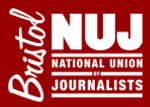A MASTERS student has produced a groundbreaking piece of research comparing violence and other forms of abuse directed at women journalists in Pakistan and the UK.
The study by Iqra Iqbal, a student of mass communication at the University of Faisalabad, contains some shocking and surprising statistics drawn from responses by 50 female journalists from each country. You can see a summary below.
One of the biggest differences is in how violence against women journalists is relatively hidden in Pakistan’s media, while UK journalists believe the issue is widely reported.
It may not be surprising that women journalists in Pakistan reported more threatening experiences than those in the UK – but the differences are often small. For example, 12 per cent of women journalists in Pakistan reported a physical threat, but their British counterparts were not far behind at 10 per cent.
Verbal threats were far more numerous, affecting almost a third of Pakistani journalists and a quarter of British ones.
The women taking part thought that violence against female journalists was much more likely to be reported in the media in the UK – 42 per cent said the issue was covered often, against just six per cent in Pakistan. Sixty two per cent of the Pakistan sample said the issue was never covered in the media, compared to eight per cent holding this opinion in the UK.
The study also looked at psychological threats and found that a small but significant proportion in both countries had been subject to severe intimidation.
Fourteen per cent in Pakistan said they had been made to feel fearful, against two per cent from the UK. Eight per cent in Pakistan had been stalked, though none suffered this in the UK.
Four per cent of UK women journalists had had a threat made against a family member – this applied to two per cent in Pakistan (two per cent equates to a single person in a sample of 50 – still an alarming statistic).
Four per cent of Pakistani women journalists have been slapped in the course of their job, while in Britain two per cent each were punched or kicked.
In the UK, only 38 per cent of female journalists had not experienced any kind of violence or harassment; in Pakistan the figure was much lower, at 24 per cent.
The use of degrading language was more frequent in Pakistan, suffered by 18 per cent of the sample, while in the UK the figure was six per cent.
The women from the UK sample were slightly more likely to have been abused on social media, at 14 per cent, compared to 12 per cent in Pakistan.
In Britain, most female journalists (84 per cent) were provided with training of some kind to combat stress or harassment. In Pakistan, almost 70 per cent had no training of this kind.
The purpose of the study was to gauge the number and frequency of incidents such as violence and verbal abuse directed at women journalists as part of their job.
Iqra says in her summary: “The study identified that sexual harassment is rampant.” It is used by men to restrict women’s professional progress and sometimes to restrain them physically, she said.
Women journalists should be aware of their legal rights as equal citizens in both countries, said Iqra. “There should be an appropriate system to monitor the atmosphere of the work place for female journalists’ safety.”
The research was assisted in the UK by the Women in Journalism group in London, the Women in Media group in Manchester and Bristol NUJ.
Paul Breeden
Violence against Women in Journalism – thesis summary ©Iqra Iqbal
